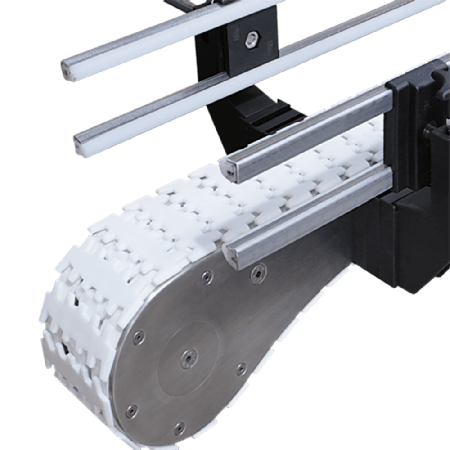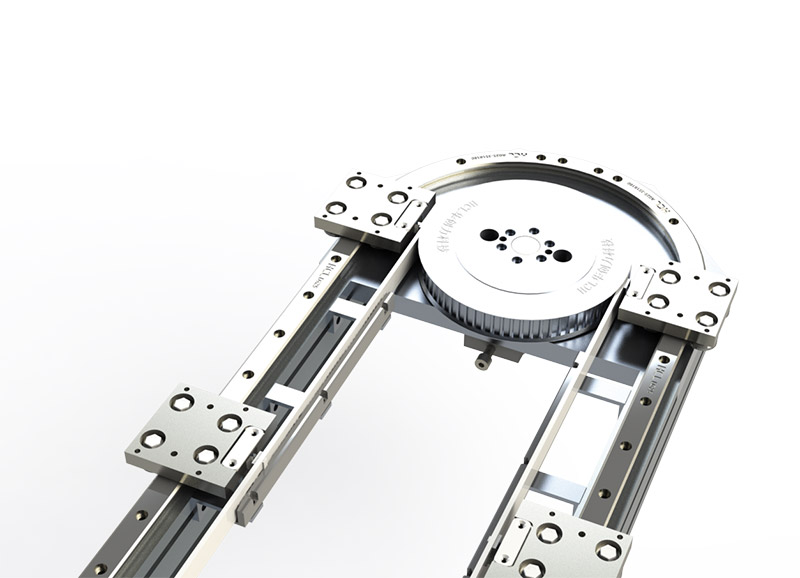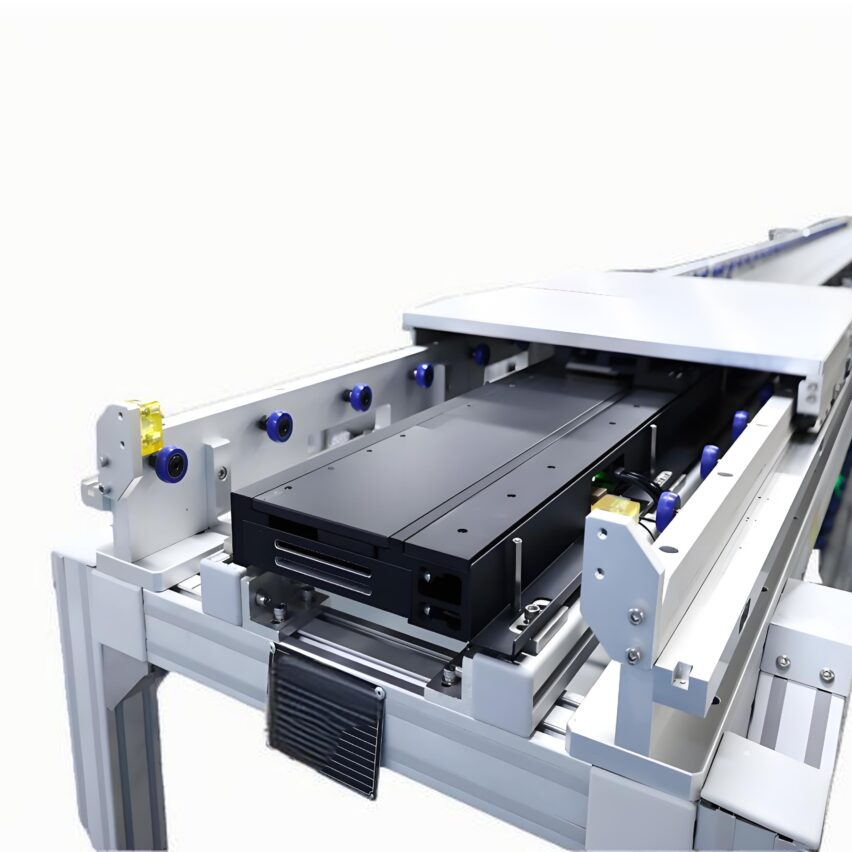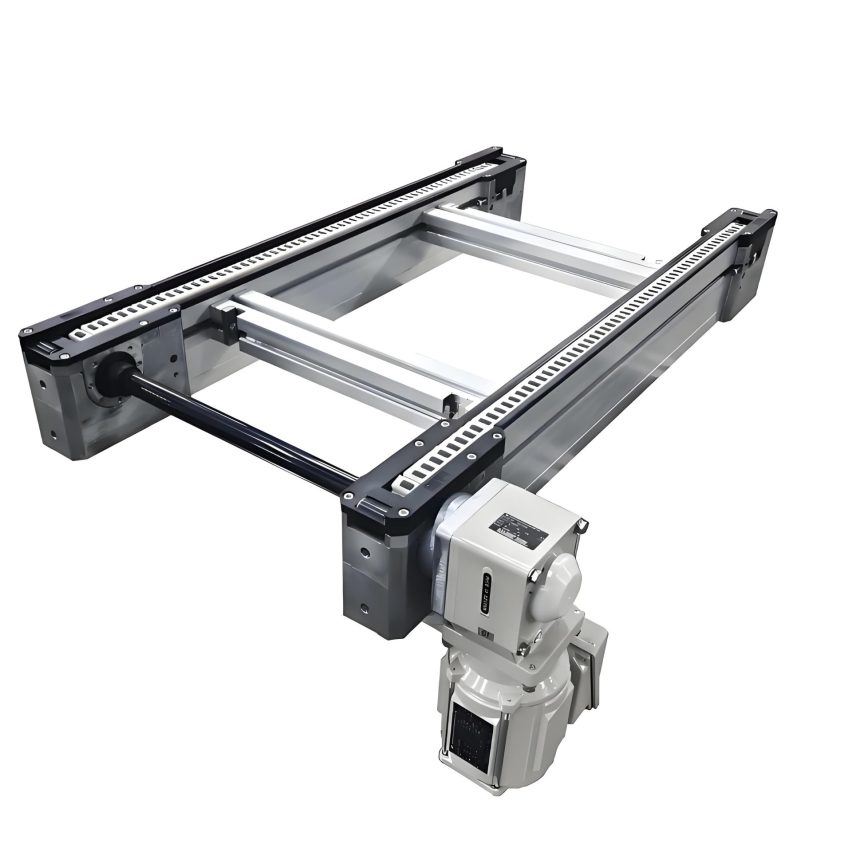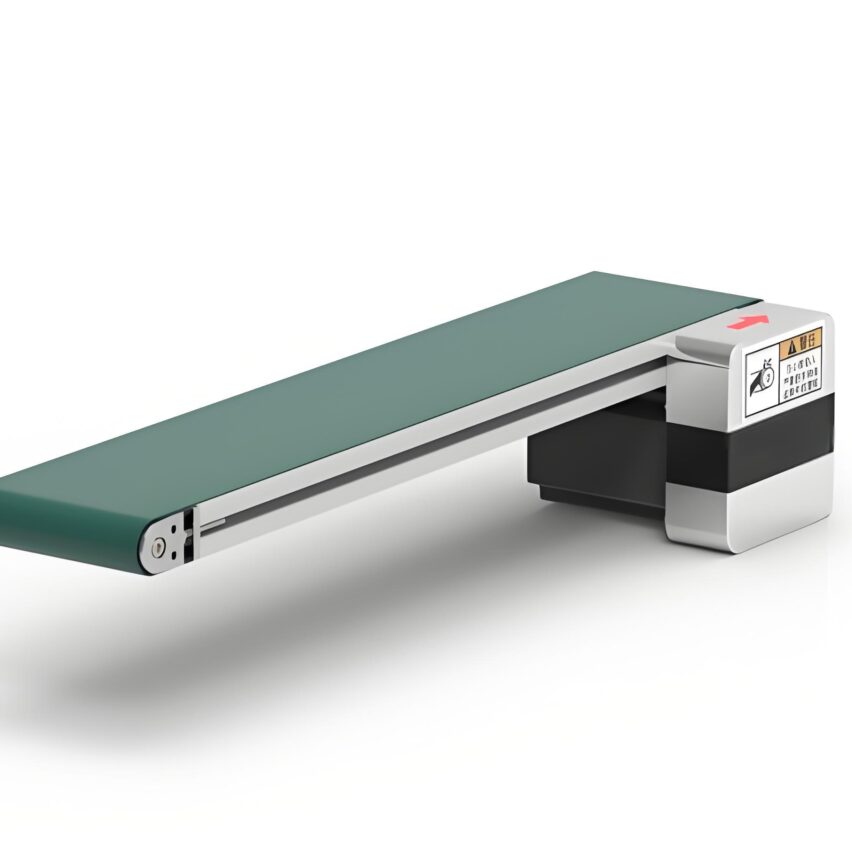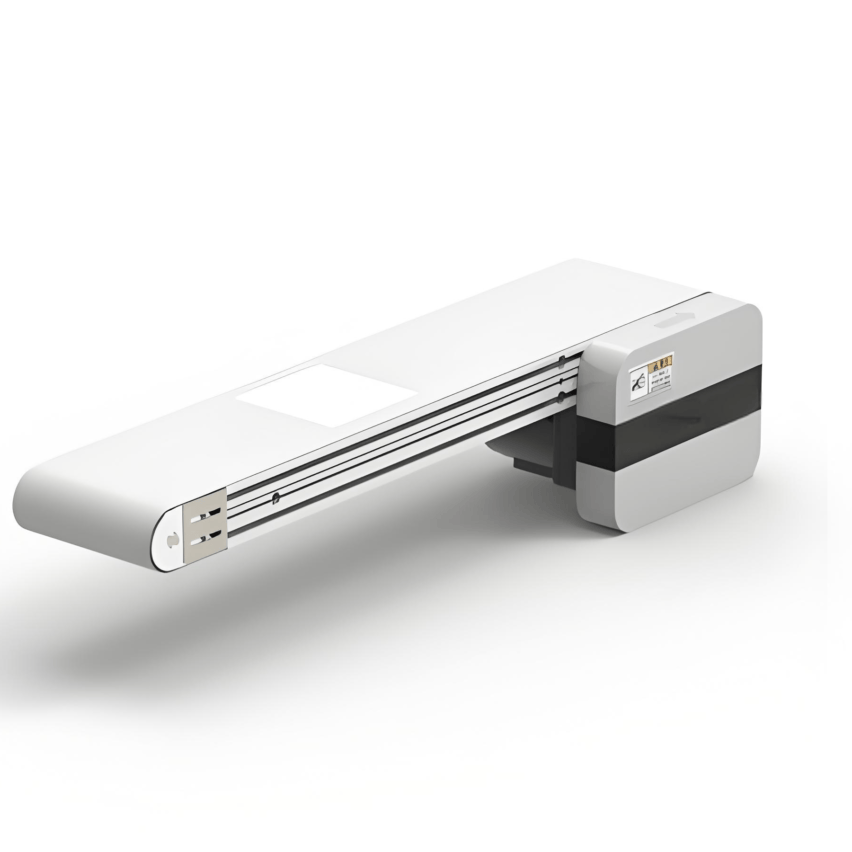## I. Lift table: "Space magician" for double-layer speed chain system
in the field of industrial automation.The lift table is the central hub of the double-deck speed chain system.It is the key task for the precise flow of the workpiece boards between the upper and lower layers. The traditional single-layer production line has been gradually replaced by the double-layer structure of "upper load conveyor + lower empty board return" due to low space utilisation. The lifting table is the "switch" to realise this three-dimensional cycle - breaking through the flat conveying limitations through vertical displacement, and increasing the production capacity by more than 80% under the same floor space.

Take the automotive seat assembly line as an example: the lifting table completes the transfer of the loaded pallet from the upper assembly station to the lower return track in 15 seconds, forming a closed loop with the plate return machine. This design not only reduces the footprint of the 30% line, but also reduces the number of pallets to be loaded through thePneumatic-chain dual drive structure(Working air pressure 0.4-0.6MPa, lifting speed 4-10m/min) to achieve millimetre-level positioning accuracy, completely solve the traditional equipment due to layer height deviation caused by the cardboard problem.
II. Anatomy of a technology: the fusion of precision machinery and intelligent control
▶ Triple fail-safe security mechanism
- Mechanical overload protectionWhen the load exceeds 500kg, the hydraulic system automatically triggers the pressure relief valve to avoid deformation of the structure (Ningbo Kefun's patented buffer block can absorb 70% impact kinetic energy).
- Electrical double interlockLifting position is linked to the start/stop of the conveyor line, and the speed chain is automatically switched off when the set height is not reached.
- Emergency physical braking: Emergency stop buttons every 3 metres along the track, with guards to prevent accidental touching.
▶ Core Component Performance Breakthrough
| assemblies | technological evolution | Effectiveness Enhancement |
|---|---|---|
| drive system | Cylinder + chain drive → servo motor + ball screws | Energy consumption reduced by 40%, noise ≤ 65dB |
| guidance mechanism | Slide rail slider + limit pads patented design | 3 times higher lateral force resistance |
| Positioning module | Photoelectric sensor + mechanical limit dual feedback | Repeat positioning accuracy ±0.5mm |
(Source: NOK Intelligent Car Seat Production Line Test Report)
III. Industry Adaptation: The Leap from Electronic Precision to Heavy Duty Manufacturing
1. Electronics industry - micron-level accuracy requirements
On the board aging test line.Lift table with anti-static coating and nylon rollersTo avoid damage to precision components. A Shenzhen SMT factory adopts a lifting mechanism with EMI shielding to control EMI below 10V/m when transporting mobile phone motherboards, and the yield rate is increased by 2.3%.
2. Automotive manufacturing - the 100kg load-bearing challenge
The new energy battery pack production line requires the lift table to carry ≥200kg of work plates. Weixing Intelligent's solution adoptsEnhanced cylinder (bore Φ125mm) with cross roller guidewayIt maintains an amplitude of ≤2mm during the 4.5m lifting stroke and meets the demand for a high beat rate of 60JPH (60 pieces per hour).
3. Pharmaceutical sterile environments - the materials revolution
The lifting tables on the pharmaceutical filling line are all made of304 stainless steel body + food grade lubricantThe design of slope drainage avoids liquid retention. Positive pressure chamber is also introduced to isolate dust, reaching the GMP certified class 10,000 cleanliness standard.
Fourth, the golden rule of purchase decision-making
### ▶ Parameter matching in three dimensions
- Load CurveNot the bigger the better! Need to match the common load (such as long-term load 50kg but choose 500kg model, energy consumption will be wasted 35%)
- Speed-accuracy balance: It is recommended to choose servo system when the speed is >8m/min to avoid ±2mm positioning deviation caused by inertia of pneumatic mechanism.
- environmental adaptationHumidity>80% environment need to use IP54 protection level, to prevent the guide rail corrosion and stagnation
▶ Cost Control Reef Warning
make a copy ofHidden cost = Energy consumption difference (pneumatic vs. electric) × annual operating hours + downtime loss × average monthly frequencyA Jiangsu enterprise case: greedy for cheap procurement of pneumatic lifting platform, the result of the compressed air system leakage led to an increase of 180,000 yuan in annual power consumption
V. Future evolution: from actuators to intelligent decision-making nodes
Digital twin pre-diagnostic technologyis changing the maintenance logic. NOK implanted vibration sensors for the lift table, and warned the risk of chain fatigue breakage 48 hours in advance through AI model, so that the fault repair is shifted from reactive repair to planned maintenance, and the maintenance cost is directly reduced by 60%.
Modular quick release designBecome a new trend. Ningbo Kefeng's patented lifting table usesGuideway slide insertion structureThe replacement time was compressed from 8 hours to 45 minutes - meaning that every hour of downtime reduced could save the automotive plant approximately $230,000 in lost production value.
VI. Self-questioning: deciphering application myths
Q1: Why must the lift table be used with a plate return machine?
The plate return machine isDedicated channel for return of empty boardsThe lift cylinder is designed to avoid mixing of carriers and products. When its jacking cylinder pushes the empty board into the lower track, it needs to keep ±1.5mm height difference with the lifting platform (exceeding will lead to jamming), so it must be used as aIntegrated System Design.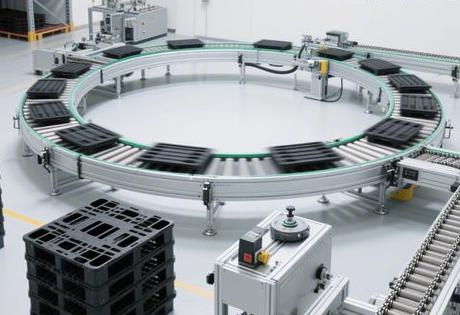
Q2: How to avoid lifting and lowering jitter in heavy load scenarios?
Triple stabilisation technology:
- Symmetrical layout of two cylinders to counteract bias moments
- 4 sets of limiting sliders + ball guide to inhibit side swing
- Staged control of lift speed (start/brake accounts for full 30%)
Reduced pallet tilt from 3° to 0.5° after application in a battery plantQ3: How is cross-floor conveying achieved?
adoptionMulti-level relay programme: First floor lifting platform → continuous conveyor line → first floor lifting platform. The key is to calculate the floor height difference in relation to the acceleration:make a copy ofAcceleration α should be ≤ 0.3m/s² for lifting heights H > 5m Otherwise the risk of pallet slippage increases 50%Q4: Fatal blind spots in maintenance?
The most easily overlookedChain deflection test--When the overhang is >2%, immediate tensioning is required. A case study showed that failure to adjust in time resulted in an incremental monthly failure rate of 151 TP3T, requiring replacement of the entire chain in only 8 months (costing 121 TP3T of the equipment price).
Industry Insights: The current 80%'s lifting platform failure originated from theHighly synergistic deviation of mechanical and electricalThe real cutting-edge innovation is not in a single component, but in how to make the lift table become a "thinking space scheduler". The real cutting-edge innovation is not in a single component, but in how to make the lifting platform become a "thinking space scheduler" - through real-time analysis of the upper level of the degree of backlog of materials, the lower level of the empty board reserves, the workstation failure status, independent decision-making transport path and speed.




